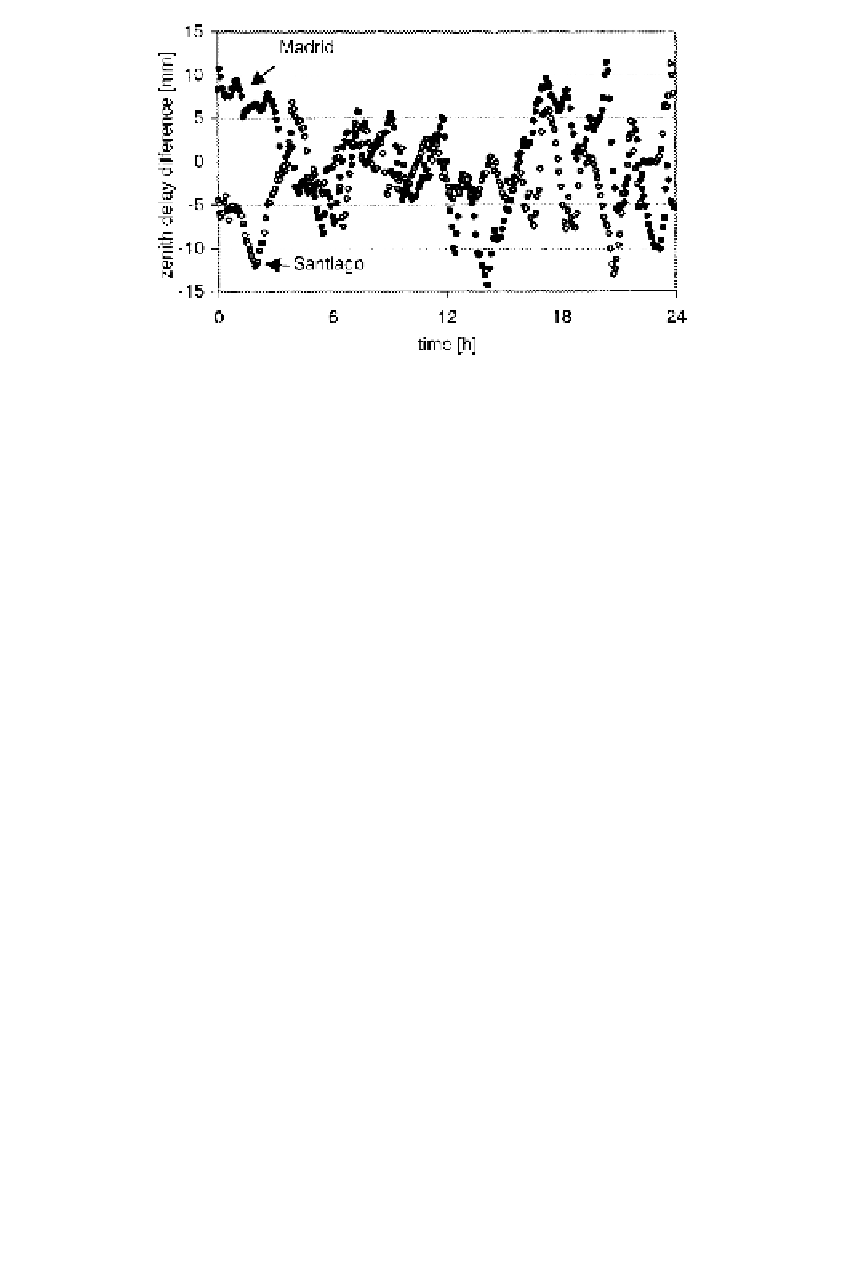Global Positioning System Reference
In-Depth Information
1
2
3
4
5
6
7
8
9
10
11
12
13
14
15
16
17
18
19
20
21
22
23
24
25
26
27
28
29
30
31
32
33
34
35
36
37
38
39
40
41
42
43
44
45
[25
Fi
gure 7.15 Zenith tropospheric delay difference for real-time estimates and computed
va
lues using the IGS rapid orbit and satellite clock solution.
Data were recorded at the
M
adrid and Santiago reference stations on October 9, 2002. The estimation interval is 5
minutes. (Data from Bar-Sever, JPL.)
Lin
—
0.4
——
Nor
PgE
shows a comparison for one day between the real-time orbital solution and the IGS
rapid ephemeris. Figure 7.15 is an example of real-time tropospheric delay estimation
at two geographically widely separated stations; again, the comparison is with respect
to the IGS rapid solution.
A global differential correction is computed for each satellite. The corrections
represent the difference between the estimated precise real-time and broadcast ephem-
erides, and the estimated precise and broadcast satellite clock corrections. The correc-
tions, parameterized in terms of Cartesian satellite coordinate corrections and satellite
clock corrections, are available over the open Internet via a TCP server running at JPL.
Hatch et al. (2002) describe a system, called StarFire, which transmits the correction
via Inmarsat L-band communication frequency (1525-1565 MHz). It uses an L-band
satellite communication receiver with a single, multifunction antenna designed to
receive both GPS frequencies and the Inmarsat signals. Users apply the global dif-
ferential corrections and use their dual-frequency pseudorange and ionospheric-free
carrier phase observations to estimate the position and receiver clock per epoch and,
optionally, estimate the troposphere (similar to PPP).
The global differential correction arrives at the user with some latency. It takes
about 2 seconds to accumulate the global data set over the Internet and 0.5 second
to process the clock solution. For Inmarsat one must add 1.5 seconds for uplink and
downlink time. For real time, the correction must therefore be extrapolated over 4-5
seconds, which causes no substantial loss of accuracy, primarily because the satellite
clocks are stable (when selective availability is off).
Both PPP and real-time PPP are uniformly accurate over the whole globe since
both rely on the dual-frequency ionospheric-free function, which is not affected by
the spatial and temporal variations of the ionosphere. The commercial version of real-
[25










































